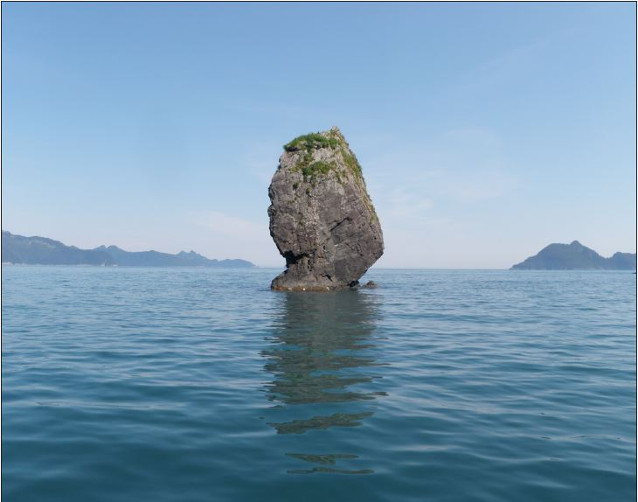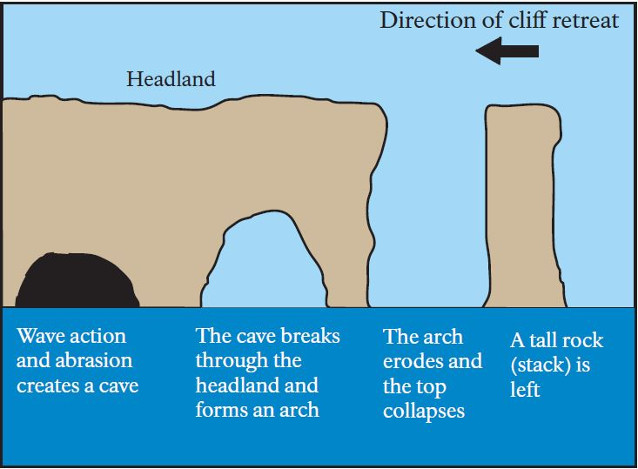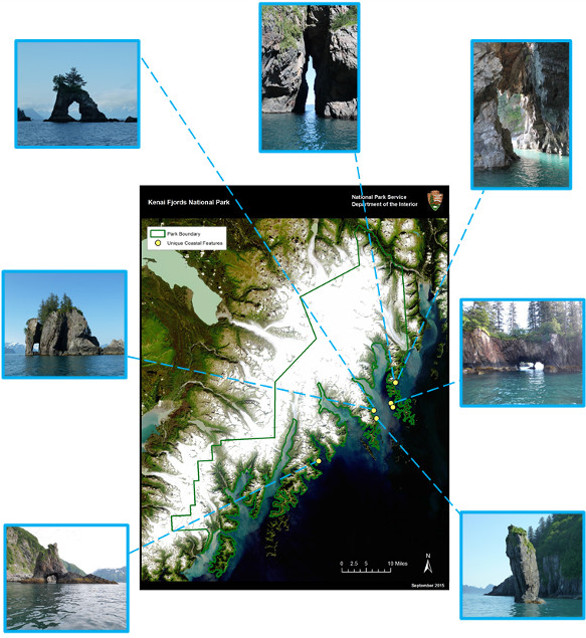A Changing Coastline

Photo: Julie Markus\NPS
Kenai Fjords National Park encompasses more than 400 miles of irregular and rugged coastline bordering the Gulf of Alaska. Storm surges, tides, currents, glaciers and tectonic processes create a highly dynamic environment and result in nearly constant changes to the coast. All of these elements work to carve out many caves and coastal features such as arches and sea stacks. These features are incredibly scenic and are a part of the reason that this region was protected and established as Kenai Fjords National Park.
Coastal landforms are created or formed as a result of wave processes. Some features are created by erosion and others by deposition. Features of erosion include headlands and bays, notches, caves, arches and stacks. Erosion occurs at different rates. Weaker areas of rock erode at a faster pace while more resistant areas remain to form the features. On a larger scale, this results in headlands and bays. Headlands are a section of rocky coastline that protrudes into the sea and are formed in locations where the rock is more resistant. On the other hand, bays are an indentation in the coastline, usually between two headlands, and are formed in locations of weaker rock.
Sea Caves, Arches, and Stacks

Sea caves occur when wave action grinds away at the rock in a zone of weakness and forms an alcove. The alcove eventually erodes and enlarges to form a sea cave. Headlands are commonly subjected to erosion from both sides. In this case, the two erosions can break through to form an arch. The arch will gradually become bigger until it can no longer support the top of the arch. When the arch collapses, it leaves behind an isolated rock pinnacle called a sea stack.
Kenai Fjords National Park contains the perfect environment and conditions for the formation of these features. In addition to their beauty, they provide habitat for the thousands of seabirds that reside in the park area. Kenai Fjords is home
to both migratory and non-migratory seabirds, including tufted and horned puffins, black-legged kittiwakes, black oystercatchers, cormorants, murres, pigeon guillemots, glaucous-winged gulls, harlequin ducks, sandpipers and plovers. Many birds favor the granitic cliffs, arches, and stacks for their nesting sites. The caves may also serve as bat habitat. Continued research on these features will allow the park to better protect and manage these important geologic resources.

Program Contact:
Deb Kurtz
Kenai Fjords National Park
(907) 422-0500
P.O. Box 1727 Seward, AK 99664
Last updated: October 7, 2016
